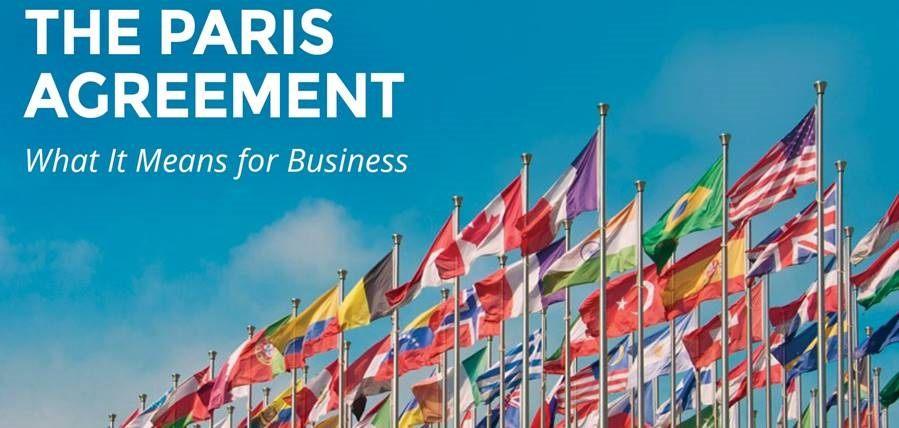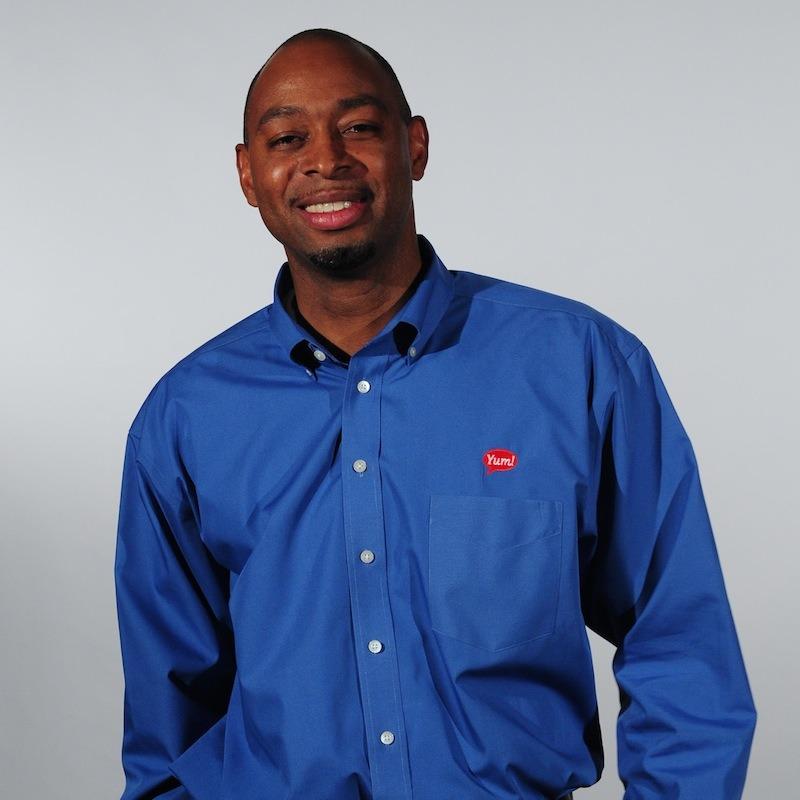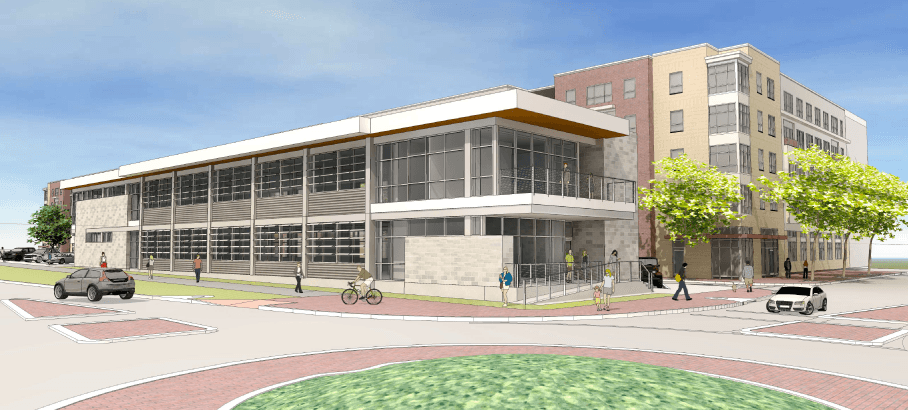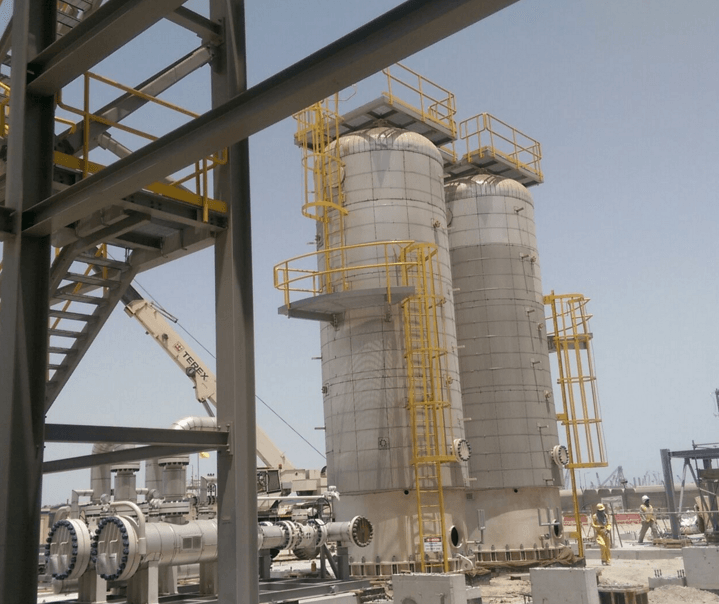The Paris Agreement: What It Means for Business


A growing number of businesses understand that money can be made by mitigating climate change. Their collective voice is becoming louder and more credible as over 150 countries prepare to formally sign the Paris Agreement on Friday in New York City.
The question now is not whether that voice is heard by national governments, but how soon policymakers will recognize the rise of clean energy as the biggest driving force behind sustainable economic growth.
The We Mean Business coalition held a global press call in advance of this week's proceedings at the U.N. headquarters in New York. The coalition's members include companies such as Google, Ikea and BSR, as well as nonprofits like Ceres. On Wednesday, they relayed increasingly compelling metrics which prove the companies that choose to ignore this tectonic shift do so at great peril to their bottom lines.
“Implementing the Paris Agreement will enable and encourage businesses and investors to turn the billions of dollars in low-carbon investments we have seen so far into the trillions the world needs to bring clean energy and prosperity to all,” said Mindy Lubber, president of Ceres, which works to mobilize investor and business leaders toward a sustainable global economy.
The Paris Agreement goes into effect once 55 countries representing 55 percent of global emissions have deposited their “instruments of accession” with the U.N. This is basically a fancy term for signing the agreement and agreeing to be bound by its terms. (For more information, check out this breakdown from the World Resources Institute.) Advocates are hoping that could happen as early as next year.
“Many businesses have helped kickstart this movement by setting ambitious targets, reporting emissions and scaling up low-carbon investment,” the We Mean Business coalition says. But it is quick to admit policies are not changing quickly enough to keep the anticipated rise in global temperature to below 2 degrees Celsius.
As promising as the opportunities may be, there was still a palatable sense of urgency among those who participated in the call.
“We cannot waste time moving these programs forward,” Lubber said. “It’s time to put muscle behind the policy.”
If roughly 400 large institutional investors with more than $24 trillion under management working toward cleaner energy is not enough, one has to wonder how much it will take to keep the Earth’s temperature from rising more than 2 degrees. Lubber’s answer: $1 trillion every year through 2050.
“It’s now vital the 196 countries who adopted the Paris Agreement, especially the top 20 major emitters . . . (sign) the Paris Agreement to bring it rapidly into force,” said Stephanie Pfeifer, CEO of the Institutional Investors Group on Climate Change, which represents more than 120 European asset owners and managers.
All eyes are on how many countries will formally accede to the agreement this Friday – Earth Day – at the United Nations in New York. The more that sign, the stronger their message will be that economic opportunities await those investing in, executing strategies and/or developing technologies to improve energy efficiency and grow renewable energy.
While industrialized nations bear a big burden of global warming to date, Anirban Ghosh, the chief sustainability officer of the Mahindra & Mahindra conglomerate in India, said developing countries should look past who’s to blame and seize the opportunity. India gets it, he said, citing $17 billion already at work on cleaner energy among 20 industries there. He called their actions “critical” to progress “because we will be the engines of growth.”
Michael Terrell, senior policy counsel for energy and sustainability at Google, strutted the more than 2 gigawatts of renewable energy the tech giant has helped develop as the largest corporate purchaser (he claimed) of renewable energy in the world. But he acknowledged mitigating climate change is something not even a few global companies can solve.
Terrell estimated the cumulative efficiency-clean-energy challenge and opportunity – today – to be a mere $13.5 trillion. But Steve Howard, the chief sustainability officer at Ikea, was quick to add: “If you want to build those industries in a big way, you need long-term, stable policy.”
“It is a very bridgeable challenge. We need to get on with it,” Howard added.
Image credit: We Mean Business Coalition
The Four Commodities Driving Global Deforestation


Depending on the sources cited, 10 to 15 crops comprise the majority of food and consumer products consumed worldwide. And the methods used to raise many of these foods have created global supply chains that are not sustainable in the long run, from their effects on water supplies to their impacts on labor and land rights.
Now, the nonprofit science advocacy organization, the Union for Concerned Scientists (UCS), suggests that four commodities alone are responsible for the majority of deforestation worldwide. They also happen to be commodities backed by powerful business interests.
These big four, according to UCS, are beef, soybeans, palm oil and, not surprisingly, wood products. And the ongoing deforestation in South America and Southeast Asia is responsible for the majority of tropical deforestation worldwide. In fact, Indonesia and Brazil are the top two countries for tropical deforestation; 44.7 percent of deforestation in plantations in Indonesia was caused by just four industries, with wood products and oil palm being the top two. Mining, however, was responsible for about 2.1 percent of deforestation in the Southeast Asian nation, an order of magnitude smaller than oil palm or wood products.
What's more surprising is that popular crops often cited as causing deforestation — such as cocoa, sugar and coffee — are relatively minor offenders compared to the aforementioned products. Pasture was responsible for about 71 percent of deforestation in South America between 1990 and 2005. By contrast, another commonly-cited cause of deforestation, mining, was found to be linked to only 0.20 percent of total deforestation.
One common trend that these four major commodities have in common is that, while there are organizations supposedly committed to reducing these products’ environmental and social impacts, their efforts are sputtering at best.
Soy is one example. Organizations including WWF have launched roundtables and frameworks to tackle the problems related to global soy production, but the shift in global food demands calls for more forceful action. Other campaigns, such as the so-called National Sustainable Soybean Initiative, are more of a front for Big Ag. And as UCS mentions, oft-maligned tofu and soy milk are hardly the catalyst behind soy’s huge environmental impact. The vast majority, as much as 75 percent, of farmed soy becomes animal feed (even for farmed fish), and about 20 percent is turned into biofuels.
Soy production has surged the past two decades, as nations such as Brazil and Argentina seized economic opportunities in this coveted crop, while regions, including Brazil’s tropical savannah cerrado, witnessed much of their land bulldozed into farmland for soy. One campaign led by Greenpeace helped stanch the loss of land, but soy continues to be a huge contributor to deforestation.
Deforestation in the beef supply chain
Walk into a supermarket in South America, and chances are plenty of beef in the meat case comes from Paraguay — even though Chile, Brazil, Argentina and Uruguay all produce their fair share of this popular meat. Paraguay’s relatively new meat industry has sparked destruction of much of its thorny, hot Gran Chaco forest. According to UCS, beef differs from most foods in that what is produced locally is often also eat locally. But the emergence of cheap Paraguayan beef, which benefits politically-connected ranchers but otherwise few Paraguayans economically, is a large part of why deforestation stemming from beef is concentrated in Latin America.
Industry efforts such as the Sustainable Beef Roundable have been more focused on purported fact-finding than taking action: When Triple Pundit last contacted this organization for a follow-up article, its representatives went silent.
The explosion of palm oil (and deforestation)
As the health risks from hydrogenated oils became known, up surged global production of palm oil. The result has been demolished forests throughout Malaysia and Indonesia, the world’s largest palm oil producers.
The work of the Roundtable for Sustainable Palm Oil (RSPO) was often greeted by skepticism, but recently the RSPO seems to have suspended more members than it has accepted.
UCS highlighted the fact that the loss of forests in tropical regions, many of them rich in carbon, has been particularly destructive. The draining and burning of carbon-rich peatlands have further added to the destruction where palm oil is grown. More companies have committed to purchasing responsibly-sourced palm oil, but whether this adoption can occur fast enough is an open question.
Demand for wood products on the rise
Finally, wood products, including pulp and paper, are another significant contributor to global deforestation. Timber extracted from natural forests accounts for a third of wood products worldwide, with managed forests presenting their own environmental challenges.
Despite the move worldwide to go “paperless,” the reality is that the demand for pulp and paper will continue to increase in the coming decades. And with more of that demand coming from developing countries where regulations are more lax, expect the timber industry’s contribution to global deforestation to remain at what UCS says is about 10 percent of the world’s loss of forests annually.
The bottom line
“We know that the four major drivers of tropical deforestation are beef, soy, palm oil and wood products," Lael Goodman, a policy analyst with the Union of Concerned Scientists, wrote in an emailed statement to TriplePundit. "These four commodities are responsible for more tropical deforestation than production of sugar, cacao, coffee and other commodities. Deforestation causes about 10 percent of the total global release of heat-trapping climate pollution. That’s the same as the annual tailpipe pollution from about 600 million cars,”
So, what is society to do? UCS researchers claim that regulatory enforcement is only part of the story. But getting companies to make supply chain commitments that are free from causing deforestation is the most important tactic to reduce the environmental degradation and human rights violations that result from the demand for some of the world’s most valuable raw materials.
Image credit: Christoph Diewald/Flickr
Residue of Herbicide Glyphosate Found In Common Breakfast Foods


Glyphosate is the most widely used herbicide in the world. It is the active ingredient in Roundup, which was released by Monsanto in 1974. Its use is “widely associated” with crops that are genetically modified to resist it.
But glyphosate comes with health concerns. Last year, the World Health Organization’s International Agency for Research on Cancer (IARC) classified glyphosate as a probable human carcinogen. In September, the state of California announced its intention to add glyphosate to its list of chemicals known to cause cancer under the Safe Drinking Water and Toxic Enforcement Act of 1986, more commonly known as Proposition 65.
With that in mind, here comes some disturbing news: Glyphosate residues are “widely distributed” in breakfast foods such as bagels, breakfast cereals and eggs, according to a new report from the Alliance for Natural Health USA (ANH-USA). Tim Reihm, director of communications and outreach for ANH-USA, told TriplePundit that the intent of the study was to see how widespread the problem is. “We think this test demonstrates how wide this problem has become,” he said.
The U.S. Food and Drug Administration will begin testing for glyphosate residues this year on some foods, mostly soybeans and corn. The ANH decided to take the proverbial bull by the horns and began testing for residues on 12 popular breakfast foods and breakfast food ingredients, totaling 24 items tested. The categories tested included flour, corn flakes, instant oatmeal, bagels, yogurt, bread, frozen hash browns, potatoes, cream of wheat, eggs, and non-dairy and dairy-based coffee creamers. The tests were done by an independent laboratory using the enzyme-linked immunosorbent assay (ELISA) test.
"Essentially, we contracted to do this report because we really were curious as to how ubiquitous glyphosate has become, and it seemed a good idea to look at breakfast foods,” Reihm said. “We all eat breakfast and breakfast seemed like a good meal to analyze. So, we really tried to take common breakfast foods, randomly picking them from the store shelves."
The levels of glyphosate found in the majority of samples were below the U.S. Environmental Protection Agency’s (EPA) allowable daily intake (ADI). However, the allowable amount itself presents a problem, according to the report, because it fails to consider the recent evidence that glyphosate is a probable carcinogen or how widely distributed the herbicide is in food and water. The EPA’s ADI is currently set at 1.75 milligrams (mg) per kilograms (kg) of body weight per day, while the EU’s is only 0.3 mg per kg of body weight, which is almost six times lower.
Critics say that the U.S. safety levels, developed on adult laboratory animals, may not be accurate because glyphosate may be an endocrine disrupter, and if so, that would affect hormone levels and produce different effects at various stages of human development. Critics also contend that the safety tests were conducted in isolation and failed to include commercial pesticide formulations that may contain other toxic ingredients that may intensify the toxicity of glyphosate.
The tests found that 10 of foods tested contained detectable glyphosate residues above 75 parts per billion (ppb); 75 ppb is equivalent of 75 mg of glyphosate per liter of testing solution, which is “well below” the ADI. One surprising food item tested, organic cage-free eggs, contained more glyphosate than EPA levels allow.
Here’s a list of 10 tested items and their levels of glyphosate (in parts per billion):
- Quaker Instant Oatmeal, Strawberries and Cream: 1327.1 ppb
- Thomas Whole Wheat Bagels: 491.9 ppb
- Rudio Multibagls: 151.5 ppb
- Pepperidge Farm Wholegrain Bread, 100% Whole Wheat: 403 ppb
- Dave’s Killer Whole Wheat Bread: 136.4 ppb
- Cream of Wheat Hot Cereal Whole Grain: 260.6 ppb
- Large eggs: 102 ppb
- Organic, cage-free, antibiotic-free large eggs: 169 ppb
- 365 Coffee Creamer: 104 ppb
- Original Silk Soy Creamer Non GMO: 86 ppb
“The results actually kind of stunned us, quite frankly. I think we expected to see some residues, corn and soy for example,” Reihm explained. “We weren’t expecting to see it on things like dairy and eggs, as there is no direct application of glyphosate in the production of those foods.”
The report suggests that Americans are likely eating foods containing glyphosate residues on a daily basis. The major concern is that they are showing up in foods such as dairy and eggs, animal products not sprayed with the herbicide. That suggests that glyphosate is entering the food chain and then building up in the tissue of animals, which is known as bioaccumlulation. The ANH is concerned that if the herbicide can accumulate in animals, it may accumulate in humans.
What the ANH hopes comes from the study is that regulators will take another look at the issue and do further studies on glyphosate. “There are a number of things the public needs to be aware of, that the government is allowing companies to do without proper testing," Reihm said.
Image credit: Flickr/James Bowe
MorningStar Farms Calculator Visualizes Benefits of Eating Less Meat


Not everyone is a fan of MorningStar Farms. Yes, those fake breakfast sausages actually taste pretty good, but this division of Kellogg’s has drawn its share of barbs.
Several years ago MorningStar Farms was grilled over the fact that hexane is used in the processing of all that soy that ends up transformed into burgers. Listed as a health hazard by the U.S. Environmental Protection Agency, hexane is used to separate massive quantities of oil from soybeans. Kellogg’s has been called out on the use of such soybeans, but its response has been that the Food & Drug Administration (FDA) approves the practice. Some writers have pointed out that the risks of eating that occasional soy burger are pretty low, and any litigation against the process has gone no where.
Of course, the question over to eat or not eat conventionally-grown soy is relative when one considers the health risks related to meat consumption, among them heart disease, obesity and, of course, the occasional food contamination scare.
To that end, the folks at Morningstar Farms worked with the consultancy Quantis to cobble together an online calculator that enumerates the environmental benefits that can result from eating less meat. Prefacing the calculator are some long-held statistics related to the meat industry: that the global livestock industry is a larger carbon emitter than the transportation sector; 30 percent of the planet’s land is devoted to livestock production; and for an individual to cut back on beef only once a week is the equivalent the conservation of about 240 gallons of water.
Curious about what impact, if any, my eating habits have on water and energy consumption, I gave the calculator a test drive. Not that much needs to be done — you move a little icon from left to right. As one of those annoying people who calls himself “veganist” (I am not vegetarian or vegan, but have cut out most animal products and generally only eat meat when I’m out on the town or at someone’s home for a meal), I probably eat meat at the most three times a week.
So, what are the results? Well, eating 18 meat-free meals a week results in my conservation of approximately 65,000 gallons of water, the greenhouse gas equivalent of 3,000 miles not driven in my car and 19,000 square feet (or two-fifths of an acre) of pastureland in a year. The most likely reality is that the benefit I provide for the environment is not as generous — after all, I do have the occasional eggs, cheese and dairy, not to mention those jugs of pickles, olives and other goodies that are lugged to my town from the Mediterranean and Middle East.
But what if we toyed with this calculator and tested it on a more macroeconomic level? Let’s say all Americans swapped out three meat-laden meals with a plate that was entirely plant-based. The results are dramatic: 2 trillion gallons of water saved, 135 billion car miles not driven and 779 billion square feet, or 23 Rhode Islands, not converted into pastureland. Then there are the social impacts: a reduction in the ongoing global land grab, as well as fewer subsidies fronted by taxpayers.
The calculator is a great tool to visualize one’s environmental impact from eating meat. Not that we will see anything like this on the U.S. Department of Agriculture’s website any time soon thanks to K Street lobbyists looking out for Big Ag, but other countries are taking notice. The Netherlands, for example, is nudging its citizens toward embracing more of a plant-based diet. A trace of hexane here and there may not be the worst price to pay for a less polluted and cruel planet, after all.
Image credit: Leon Kaye
Think Beyond The Menu and Help the Planet


Editor's Note: The following is an op/ed by Roger McClendon, chief sustainability officer for Yum! Brands. TriplePundit hosted an Earth Week Twitter chat with Yum! Brands on Tuesday, April 19. In case you missed it, you can catch a recap here.
By Roger McClendon
Imagine strolling into your favorite restaurant. You probably walk through the door focused on what food to order, which table to take and how much it will all cost. Yet there is actually a lot going on behind the scenes you may have no idea about, and it affects the future of the planet.
Many restaurants are looking to reduce their environmental footprint. You may be surprised to learn that environmental sustainability ranks as the third top trend out of 198, according to a new survey from the National Restaurant Association and the American Culinary Federation. Four out of 10 survey respondents think environmental sustainability will be the hottest menu trend a decade from now.
Reducing energy consumption is a key part of green building design. Restaurants use a lot of energy due to their relatively small size and nearly continuous cooking, ventilation and refrigeration. Many are open long hours or even operate 24/7 and have heavy foot traffic from customers. Reducing energy consumption helps the environment and also saves costs, which helps improve profitability too. Looking at all aspects of sustainable building innovation including energy savings, water conservation, sensible material use, sites and interior environments is vital to reducing a restaurant’s environmental footprint.
The restaurant industry is making headway but still has far to go. For example, palm oil, a globally-traded commodity used in many different products from cooking oil to cookies, is commonly produced in ways that involve the destruction of tropical forests and peat lands. The good news is that palm oil can be produced without deforestation — and many companies have begun to make public commitments to use deforestation-free palm oil in their products. The Union of Concerned Scientists (UCS) is asking consumers to tell restaurant companies that deforestation is an unacceptable ingredient in their products. I couldn’t agree more.
I would argue that environmental sustainability is no longer a fad in the industry. It’s becoming the way restaurant companies are operating to benefit customers, employees, shareholders and the planet. In optimizing how restaurateurs can be more efficient and minimize environmental impact though innovation, powerful business cases can be created to become more environmentally responsible, raise social consciousness and reduce expenses.
Through energy-saving efforts and certifying or building to LEED standards, restaurants have the opportunity to have a positive impact on the environment in not only energy efficiency but in other categories such as water conservation, materials use, site sensitivity and the well-being of building occupants.
In order to succeed in the path to environmental sustainability, restaurants must work diligently with vendor partners and seek guidance and counsel consultants and organizations not only to reduce energy consumption, but also help lead the industry to widespread greener practices. We must use our resources more responsibly and make sustainability in the restaurant industry a reality.
The United States Green Building Council (USGBC) is a valued supporter of the development of our green restaurants around the globe. Its 12,000 members work together to transform the building landscape to give people better, brighter, healthier spaces to live, work and play whether that means maximizing energy efficiency in older, existing building structures or providing a sound framework for constructing a holistic green restaurant. We at Yum! Brands are also working with the U.S. Department of Energy’s Better Building Alliance and the American Society of Heating, Refrigeration and Air-Conditioning Engineers (ASHRAE) to both promote energy efficiency and find even more ways to reduce our carbon footprint.
Sustainability is not just a word to me; it’s a core value and I challenge you, as customers and as leaders, to look holistically at the industry to make the largest impact — ensuring that each year you are doing more for the planet than the last.
The next time you walk into your favorite restaurant remember to think beyond the menu. Consider if they are on a path to reduce their environmental footprint.
Images courtesy of Yum! Brands
Roger McClendon is chief sustainability officer for Louisville-based Yum! Brands, parent company of KFC, Pizza Hut and Taco Bell. Yum! Brands is listed on the 2015 Newsweek Green Rankings and participates annually in the Carbon Disclosure Project.
Big Data Needs More Women


By Marie Klok Crump
Big data continues to become a standard across all areas of our lives, not just business and industry. As Silicon Valley insider Dr. Anita Sands has said, “I think every company is now waking up to the fact that it’s in the technology business, no matter what product or service it sells, and trends such as mobile, cloud and big data are here to stay.”
Researchers analyzing this global rise in big data and information management have found compelling evidence that the chief data officer (CDO) position and related “data roles” are a new category where women thrive beyond the glass ceiling.
Gartner’s 2015 research around the office of the chief information officer (CIO) uncovered some gendered behavioral tendencies:
- Women CIOs are 9 percent more likely than their male counterparts to “be pessimistic about risk approaches” that don’t keep up with ever-growing digital exposure. In big data, being more aware of risk is a plus.
- Women CIOs tend to be substantially more optimistic about analytics’ potential than their male counterparts, particularly in predictive analytics (32 percent vs. 22 percent) and social and multimedia information (19 percent vs. 13 percent).
- The women in this study were far more likely than men to “adapt the metrics they use to prioritize and assess performance and value to their reporting structure.”
Another Gartner analysis looked at chief supply chain officers and the ability to retain women in that profession. Among its conclusions, the study stated, “We are losing critical assets we could be slotting into mid-career roles — the roles we struggle hardest to fill.”
Why aren't women in these roles yet?
A little more than two years ago, Gartner analyst Debra Logan predicted the question.
She first noted Forrester’s groundbreaking research establishing a strong correlation between annual revenue growth and whether that company had a CDO. At the time, 25 percent of those relatively new roles were held by women, compared to the neighboring offices of the more established CIO position — with only 13 percent occupied by women.
You don’t have to do many Google searches to find serious concern over the lack of women in leadership and technology roles. People have put forth assumptions as to why these gaps exist, but there isn’t any data to back them up — and it’s dangerous and offensive to make generalizations.
More CDOs and more women in the CDO office
Here’s what we do know, even though it’s anecdotal.
When we look at our clients, we see a clear majority of women. In fact, almost all of the champions with whom we work are women, with representative titles ranging from VP of enterprise global data to director of master data management business process.
It’s not just because they went to school for business intelligence or data analytics. It’s because they’ve taken ownership of business challenges. In the interest of the enterprise, these women reach across functions and departments to improve business outcomes. You could say they just “fall into” these roles as a result of exercising a force from within the group.
We refer to this as leadership from the middle. Given the overall newness of these positions, there’s not a strong history of male leaders and institutionalized gender bias. The role descriptions are still pure in the sense that they’re focused on the qualities people need to earn those roles, and these qualities are represented across many business roles.
That makes it easier for women to step into and thrive in these roles. The CDO and similar roles often grow out of a business function where there’s a higher ratio of women compared to the ratio of women in traditional IT roles. It’s not uncommon for us to work with leaders who built the majority of their business careers in finance or the supply chain and have lived the reality of data’s effect on business (and the resulting business interruptions).
The female presence in big data
Gartner predicts that, within the next three years, women and men will populate data roles in an even split. Logan estimates that there are currently 950 CDOs worldwide.
She says, “I'd like to be bullish and say in five years, 40 to 50 percent” of the world’s CDOs will be women. We are already moving toward that number — we see female business leaders today serving as change agents for an increased emphasis on data as a significant factor for business strategy and innovation.
These leadership positions within the data role tend to require fewer specialized technical skills. While the human resources capturing, manipulating, maintaining, and analyzing data tend to need backgrounds in tech, the ability to lead the efforts doesn’t require someone to know all the details of coding or systems; instead, it requires understanding how the business operates and how to drive positive outcomes for the business.
More important in these roles are skills that have been proven common in women: communicating, building relationships and nurturing teams, exercising diplomacy, exuding positivity, problem-solving and consulting with clients.
Strong data team members know how to listen and ask the right questions. They are skillful advocates for data, its importance, and its impact on the business. People in data roles should be both solution-oriented and process-focused. They will understand the degree to which data elements need to be governed. There’s a delicate balance between “overgoverning” the data and not sufficiently establishing or guarding the information.
Women typically possess these skills, which are serving them well as they increasingly move into data-centric roles. Data is a growing field that needs more women.
Image credit: Pixabay
Marie Klok Crump is principal partner at DATUM LLC, an information management solutions company providing data governance software (Information Value Management®) that demonstrates the value of data through natural integration with business functions. Marie provides the leadership, management, and vision for strategic growth including brand identity, strategic alliances, channel development, and operational excellence for the customer life cycle.
Unilever Pushes ‘Rethink Recycling’ Campaign to the Bathroom


Last year, Unilever launched the “Rinse, Recycle, Reimagine” campaign in an attempt to inspire Americans to recycle all those shampoo and body wash containers used in the bathroom. The company even gave out heaps of prizes. But apparently many of us are just too lazy to carry those empty bottles from the bathroom to the kitchen recycling bin, even though such plastic containers are made from the same materials that store our kitchen cleaning products.
Now, Unilever says it will fire up this awareness campaign yet again this spring. In a press release widely distributed across various media channels, Unilever’s U.S. operations are reminding us that only 14 percent of bathroom bottles are recycled, leaving 29 million tons of plastic in landfills annually. With that in mind, the company says it is encouraging consumers whose bathrooms are stocked with the likes of Tresemmé, Dove and Suave to recycled those bottles and reimagine what they could be.
Those who want to show how “green” they are with their ideas can vote for what they think this recycled plastic can become, and inserting the hashtag #RethinkRecycling, on Twitter. And, to be clear, you should tag @UnileverUSA in order to join in on the fun. Ideas of what could be made out of Unilever's recycled plastic include children's coats, school supplies and playground equipment.
This social media campaign, according to Unilever, is more than about engaging consumers to share their ideas about recycling, but in fact, serves to create more social impact. Visitors to Unilever’s site can learn which containers are recyclable in the first place, and the company says it wants to highlight what can become of recycled plastic, from building materials to kayaks. With this year's U.S. Presidential election in mind, the company is inviting consumers to learn more about recycled plastic and to vote for their ideas here.
Whether Unilever’s campaign does more than engage its alpha consumers and create more recycling aficionados remains to be seen; we can be assured that the other consumer packaged goods companies are watching to see if they should get on board with a similar agenda. Regardless of the outcome, such attempts to raise awareness certainly cannot hurt, as too much plastic ends up on the streets or in landfills instead of being reprocessed into other uses. Considering Unilever often highlights that they touch the world with 2 billion items a day, that is a lot of plastic that could be put to better use.
Image credit: Unilever
Florida College Town Embraces Green Building


By Gotham Chandna
Rising energy costs are causing homeowners and business managers across the nation to focus on energy-efficient, eco-friendly real estate design. According to the National Association of Home Builders, average home and office sizes have decreased in the last 18 months, most likely due to the soaring costs of heating and cooling mammoth buildings. Recent trends also show that home buyers are asking about eco-friendly features such as sustainable materials and LEED-certified appliances. Green housing features are now in high demand.
A similar movement is shaping up in commercial real estate development and building design in Gainesville, Florida. Trimark Properties, a commercial real estate development company based in Gainesville, has taken the lead in green and sustainable office space design in the small University of Florida town. Gainesville, home of the Gators, Grooveshark, Gatorade (do you see a pattern?) and now green commercial real estate.
In recent years, Gainesville has witnessed a paradigm shift in the number of incubators, accelerators and venture capital firms showing interest in the startup eco-system this city has to offer. It is becoming well known for its burgeoning high-tech workforce graduating from UF every year. It has one of the leading hospitals in the nation, a location in the Florida high-tech corridor with easy accessibility to cities like Orlando and Miami -- plus state and local tax programs like the HUBZone that make it easier for companies in Gainesville to succeed. The “Go Gators” sports vibe adds to the favorable climate Gainesville has to offer. Once they move to Gainesville, people do not want to relocate, and that helps companies keep their employees long-term.
John Fleming, managing partner of Trimark Properties, said: “Gainesville is a city of the future. It’s resilient, sustainable, eco-friendly, and it sincerely caters to the startup culture.”
Trimark Properties is now building Nimbus, the biggest green commercial real estate development project that the city has ever seen. Let’s take a deeper dive into this magnificent, state-of-the-art building and the features that make it truly unique and eco-friendly:
Upcycled materials
Southern red cedar and long-leaf heart pine wood were sourced from a 100-year-old building that was previously located on the property where Nimbus is now being built. This beautiful wood will be used to build an accent wall in Nimbus’s main lobby and in an open work area along the south side of the building.
The salvaged wood was milled at the Goodwin Co., industry leaders in reclaimed heart pine and well known for its high-quality woodworking and craftsmanship. Not only will this create a breathtaking centerpiece in the building, but it’s also a memorable green feature since it doesn’t require the harvesting of additional trees.
Historic doors, beams, joists and other hardware were also salvaged from the demolished building and a family medical center located nearby; all of the salvaged pieces will be used in future developments by Trimark Properties.
Dynamic glass windows
If your windows don’t tint on command, then your office building will soon be considered old fashioned. Fast forward to 2016, when dynamic glass is becoming one of the hottest building trends because it significantly reduces cooling costs for the building.
The tint on the building’s storefront glazing will change based on cloud cover and solar intensity. The system will be programmed with the building’s longitude and latitude (29°39’02.9”N, 82°19’50.0”W) and will be linked to the National Renewable Energy Lab’s database which identifies and forecasts the sun’s angle throughout the year. Multiple photo sensors will be strategically placed on the building’s exterior, further allowing perfect customization of the tint to the sunlight levels on any given day in Gainesville. By varying the voltage passed through a layer of nanoscale particles embedded in the glazing unit, the glass’s tint can be adjusted, thereby controlling glare and solar light transmittance.
This smart glass improves energy efficiency and eliminates the need for blinds or other shade control devices. Smart glass also minimizes glare and helps maximize daylighting. Thanks to a sophisticated controls system, all of this happens without any required input from the building’s occupants, allowing them to focus on their daily tasks from the comfort of their perfectly-lit workspace.
Cool roof
The building’s roof is a single-ply, membrane roof with a very high solar reflectivity index (SRI). Roofs with a high SRI rating reflect solar heat more than roofs with lower SRI. The reduced roof temperature brings down the load on air conditioning, which keeps utility costs low.
Sun shades
To beat the Florida heat, sun shades will be installed on the west side of the building, to prevent it from heating up under the blazing western sun. This will reduce the solar heat gain on the building thus keeping the cooling costs down.
Water infiltration
The storm-water collected from the roof and the parking lot will be routed through an underground storm water detention system. This infiltration system allows water to filter out oils, sediments, and nutrients before it discharges the wastewater into the municipal storm water system.
Other green features
The building’s lighting-control system features occupancy sensors in the bathrooms, which will shut the lights off when the facilities are not in use, which conserves energy. All paint used in the project will be low-VOC (volatile organic compounds), which helps with indoor environmental air quality. All adhesives used in the millwork will be urea-formaldehyde free. Again, this helps with indoor environmental quality.
These modern eco-friendly amenities will be first enjoyed by Sharpspring, the building’s first tenant. Sharpspring is slated to move into Nimbus later this year after Trimark finishes customizing the building for their specific needs. Sharpspring is a leading provider of marketing automation software, with offices across the globe. Nimbus will be Sharpspring’s national headquarters and will provide ample growing room for the company which is currently in a high-growth period. They expect the building’s attractive design and eco-friendly features to help them recruit top-class talent to work at their company.
Image courtesy of Trimark Properties
Gotham Chandna is a marketing professional, ranked in top 100 users in PR and a panelist in Cannes and Sundance film festivals.I'm mentioned in Inc., Huffington Post and Examiner. Follow me on @gothamc for great information on marketing and my travel adventures.
OPEC Talks in Doha Fail to Freeze Oil Production


“Oil is a force for good,” Saudi Arabia’s oil minister, Ali Al-Naimi, recently said, but low oil prices have contributed to social and economic chaos in many countries rich in hydrocarbon reserves.
Many of these nations have established annual spending budgets based on oil prices that range from $60 to $80 a barrel. So, the current price -- hovering around $40 per barrel -- has finance ministries scrambling. Some countries, such as Qatar, have some wiggle room, as Bloomberg reported that it needs oil priced at least around $55 a barrel for a balanced budget. Other countries that are notorious for squandering their oil wealth, including Nigeria and Venezuela, need oil to surge up to $120 a barrel in order to fund their spending plans. Nigeria’s oil minister, however, said $60 a barrel oil is “tolerable,” because, after all, the World Bank has figured that at least 45 percent of his country’s people lack access to power anyway.
It's against this backdrop that oil ministers from OPEC countries met in Doha, Qatar, earlier this week. Their goal was to see if they could all find a way to freeze production in order to bring price stability -- defined, of course, by their point of view.
Analysts generally assume the Saudis have instigated the push to lower prices in order to kill off the shale oil industry in the U.S. and to thwart Iran’s reemergence as a global oil producer as international sanctions are lifted. Some have also assumed these chess moves are also an attempt to first scuttle the COP21 climate talks in Paris, and in addition, to sabotage the global clean-energy sector — though clearly, the evidence suggests a worldwide surge in renewables is underway despite low oil prices. Bloomberg, in fact, has suggested the global investment in clean-energy technologies actually increased in 2015 to over $329 billion.
So, in an effort akin to rearranging the chairs on the Titanic, OPEC members agreed in January to convene in Doha in order to find a way to curb production. Saudi Arabia and some of its allies, including the United Arab Emirates, balked at the idea. But it grew clear any hopes that the “market would correct itself” were growing faint.
The announcement of that meeting alone helped oil creep up in price, from a historic low of under $30 a barrel in January to its current price at just over $40. But infighting within and outside OPEC was clearly not a solution, as Iran, along with non-OPEC member Russia, kept generously pumping oil -- keeping prices far lower than other oil-producing states would prefer.
The meeting in Doha ended this week without any agreement, in part because Iran refuses to decrease its oil production. But this was also a battle going far beyond numbers and volume.
As Reuters pointed out, two days before the Doha talks launched, the leaders of Iran and Saudi Arabia clearly gave each other the cold shoulder during a summit of the Organization of Islamic Cooperation in Istanbul. The continuing mistrust between the Saudis and Iranians, who are both vying to be the center of power and influence in the Middle East, spilled over into the Doha meeting.
To make a long story short: Saudi Arabia asked Qatar to rescind its invitation of Iran to the Doha OPEC meeting, Qatar said no, and the meeting ended in acrimony. In fact, OPEC does not even mention the Doha gathering on its website, although its most recent press release discusses its condolences to Ecuador following the massive earthquake that killed hundreds of people on Saturday.
The stubborn fact that OPEC refuses to acknowledge is that its members are on the losing side of economics, technology and history. The deep cuts in oil prices have not affected the U.S. much as electricity production is increasingly coming from natural gas. And despite cheap oil prices, all of the major automotive companies are still investing in electric vehicle research and development. Sales of electric cars are increasing worldwide, including within the U.S. and China.
Some leaders within these countries, including Saudi Arabia and its close ally, the UAE, are getting the message, as they are slowly gravitating toward renewables in part to diversify their economies.
But if the richer OPEC countries are to continue funding generous social welfare programs for their citizens -- and if its poorer members will ever be able to improve the quality of life for their people -- the time for the oil giants to recalibrate their strategy was yesterday.
Image credit: Leon Kaye
Consumer Pressure is Driving the Cage-Free Egg Trend


This month two more companies announced they will make their egg supply chains cage-free by 2025. Walmart U.S. and Sam’s Club U.S. will phase out hen battery cages by 2025. Battery cages are as small as one sheet of paper and do not allow hens to flap their wings or engage in natural chicken behaviors such as perching or dusting.
Darden Restaurants, parent company of Olive Garden, will phase out battery cages from its egg supply chain by 2018. The company will also phase out sow gestation crates from its pork supply chain by 2025.
Both Walmart and Darden cite the Five Freedoms of animal welfare, formulated by the Farm Animal Welfare Council:
- Freedom from Hunger and Thirst by providing ready access to fresh water and a diet to maintain full health and vigor.
- Freedom from Discomfort by providing an appropriate environment including shelter and a comfortable resting area.
- Freedom from Pain, Injury or Disease by prevention or rapid diagnosis and treatment.
- Freedom to Express Normal Behavior by providing sufficient space, proper facilities and company of the animal's own kind.
- Freedom from Fear and Distress by ensuring conditions and treatment which avoid mental suffering.
Josh Balk, senior food policy director for the Humane Society of the United States, told TriplePundit that it has “fortunately become very difficult for major food companies to appear on the side of animal abuse, in this case, the cruel confinement of hens in tiny cages.” He added that going cage-free has two benefits as it is “dramatically better for the animals" and "it’s also good business sense to align policies with customer sentiment regarding animal welfare.”
Consumer-driven campaigns really do have an impact on a company’s behavior. Good Food Now is a great example. Good Food Now is a campaign by environmental, worker justice, human health and animal welfare organizations that call for Darden to improve both its labor practices and commit to serving food that is better for people, the planet and animals. In November, the over 50 organizations involved in the campaign sent a letter to Darden asking the company to improve its practices regarding serving and sourcing food.
The campaign sent another letter to Darden in January, urging the company to adhere to the Good Food Purchasing Policy, which includes making animal welfare a priority. Other parts of the policy include making environmental sustainability, a valued workforce, local economies and good nutrition important. The letter asked Darden to remove sow gestational crates and caged hens from its supply chain -- two requests the company now pledged to deliver on.
We asked Hannah Hafter, senior program leader for activism at the Unitarian Universalist Service Committee (UUSC), what is driving these corporate animal welfare commitments, including the move to cage-free eggs. “I believe it’s consumer driven," she replied, adding that the Good Food Now campaign “is a consumer campaign.” The UUSC is one of the 50 organizations involved with the Good Food Now campaign.
The campaign is not boycotting Darden’s restaurants, but it's using consumer pressure to get the company to commit to better practices. Darden is “in a position to set trends rather than follow trends," Hafter said. And there's often a domino-effect with big companies, she explained, where one makes a commitment and “a new norm is set.”
Darden’s commitment to phase out battery cages and sow gestation crates is the “big success” of the campaign, Hafter told us. “As we use our consumer power to push the bar higher, the bar starts to move for the entire industry,” she said.
The Animal Welfare Institute is another organization that is part of the campaign. Michelle Pawlinger, farm animal policy associate for the Animal Welfare Institute, told TriplePundit: “It’s almost at the end of the ages for battery cages.” She thinks there will be an end to the use of battery cages among hens in the U.S. within 20 years. That is a good thing as "chickens have their own natural behaviors, and giving them a life worth living is really important,” she added.
Image credit: Flickr/Sh4rp_i